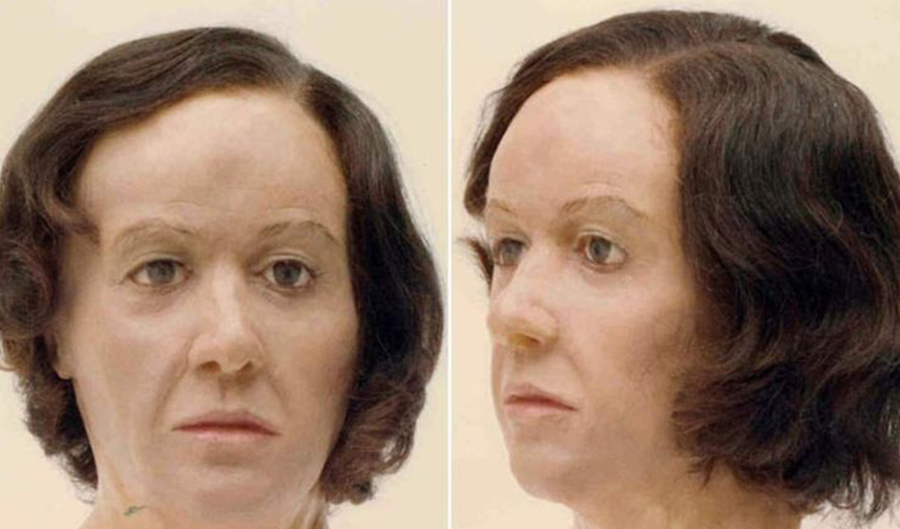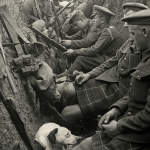“Near Scawton Moor House, you will find a decomposed body among the willowherbs,” said a well-spoken voice during a phonecall to Ripon Police Station in 1981.
The caller refused to give his name, citing national security reasons, and hung up.
That anonymous call only lasted a few seconds. But it sparked one of the most enduring mysteries North Yorkshire Police has ever encountered.
And more than 40 years on, the mystery remains.
After the call ended, officers went to the scene near Sutton Bank and found the woman’s decomposed remains in the undergrowth, exactly as the caller described.
Despite extensive investigations at the time and in the years that followed, she has never been identified.
But today, a specialist cold case team is revisiting the investigation in a bid to finally solve the mystery.
They now believe gaps in people’s family tree could give them fresh leads that could finally unlock the secrets of the case.
The last time detectives actively investigated the case was 2012 when her body was exhumed from an unmarked grave to gather new DNA evidence.
And while there have always been theories that foul play was involved, there has never been enough evidence to officially categorise it as homicide.
Table of Contents
Appeal to Family Historians
Adam Harland, a former detective who is now head of North Yorkshire Police’s Cold Case Review Team, is leading the review and has launched a fresh appeal.
“This has been one of the most enduring mysteries I’ve worked on,” he said. “It’s highly unusual for someone who has died in these circumstances to remain unidentified for decades.
“Despite the passage of time, nobody deserves to be simply forgotten about – this was someone’s mother. And it’s likely she had friends who cared about her.”
Past investigations have been extremely thorough. But science and forensics have come on leaps and bounds since the 1980s.
Mr Harland said: “If names are put forward, we’re now in a position where we can apply this information to our DNA forensic records for this lady.
“Local knowledge may offer up this information. People’s lives and allegiances move on, and time can tease out information that has been closely guarded in the past.
“Another possibility is someone who’s researched their family tree might have found a gap, or discovered a relative who disappeared from official records around 1979 to 1981 without any clear explanation.”
He added:
“Police forces have used similar techniques for cold case investigations in the past and while they may seem unconventional, they can provide the missing piece to the jigsaw.
“I’d rather 200 names were put to us and 199 were wrong than nothing to work from at all. That one piece of information could be all we need now to solve a decades-old mystery.”
To help people narrow down the search, North Yorkshire Police has confirmed the mystery woman was probably born between 1935 and 1940, making her between 39 and 44 when she died.
It was impossible to determine an exact date of death. But other evidence at the scene, and her advanced state of decomposition, led detectives to believe she probably died in 1979.
A post-mortem showed she gave birth to two or perhaps three babies, who could now be in their 60s.
She was white with brown hair, around 5ft 4ins tall and wore size-four shoes.
She had several distinguishing features, including a mild upper spine malformation that could have made her hold her head at an unusual angle.
She also had several missing teeth and other evidence of a lifestyle that involved regular smoking and drinking.
A wax model of her face was sculpted in the 1980s, based on skeletal evidence, and investigators still believe this is a reasonably accurate depiction.
Recent Developments – DNA and Time
The case was featured on the BBC’s Crimewatch Live on 29th March 2022.
The press at the time dubbed the case “the nude in the nettles” – a reference to how the woman’s body was found, although she was actually discovered in a willowherb patch by the side of a rural road on the edge of the North York Moors.
The development of a DNA database which is now used extensively in suspicious death investigations would not exist for another 14 years.
Because of this, a DNA match would now rely on a living son or daughter of the woman committing a crime and being added to it, which is unlikely given their age range – most crimes are committed by younger people.
But investigators hope the passage of time can now provide the missing link that enables them to finally identify the woman and resolve a decades-long mystery.
Mr Harland said:
“Someone, somewhere could be sitting there with information they’ve never felt able to share, or a family tree wondering who this person was. My message to them is simple: I’d like to hear from you.”
Can You Help?
If you have information that could help this North Yorkshire Police cold case review, please email [email protected] with a summary of the information you have. A member of the cold case team will record it and may make contact with you to discuss it further.





